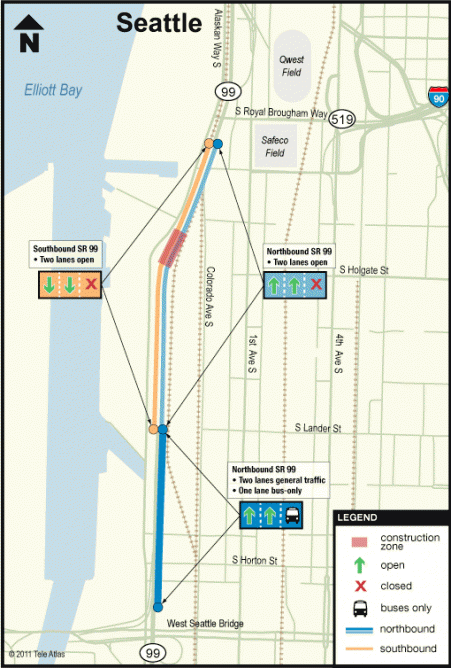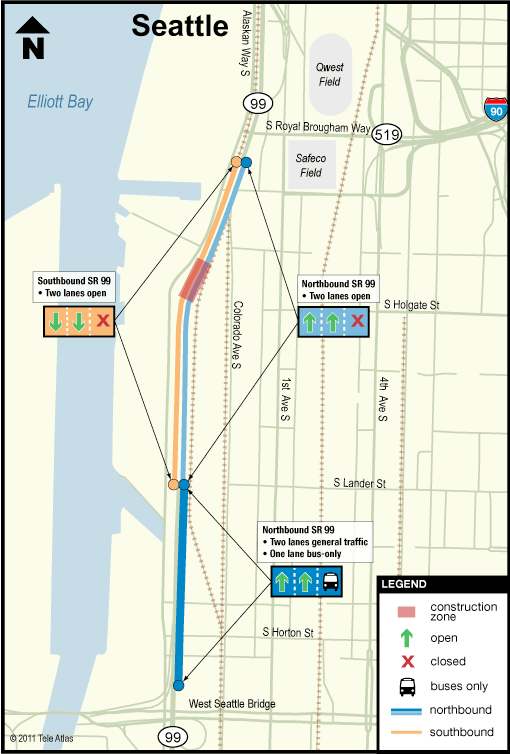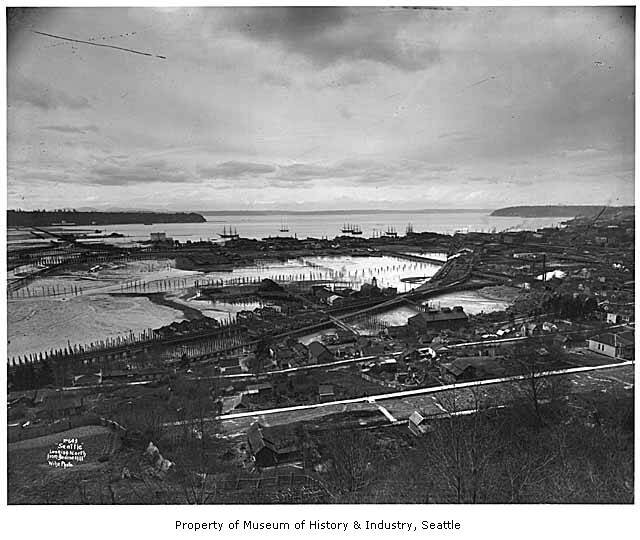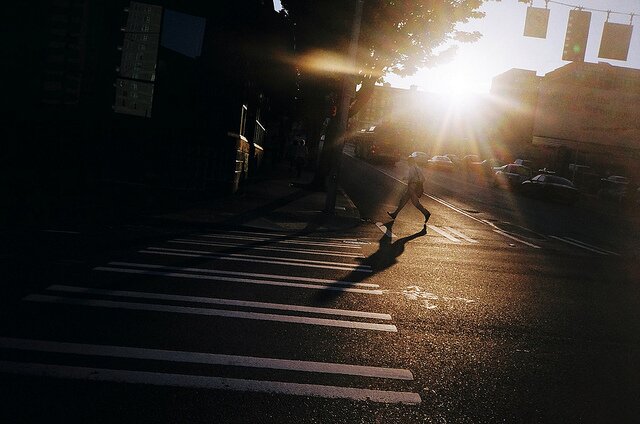
On May 16, after a weekend closure of the Alaskan Way Viaduct, SR 99 will narrow from three lanes to two each way, northbound and southbound, between the West Seattle Bridge and the stadium district. For about a third of the distance northbound, from the bridge to where South Lander would be, there will also be a bus-only lane.
West Seattle Blog commenters smell impending disaster, but since the lane closure is supposed to last until 2013 (“and possibly longer,” adds WSDOT), there will be plenty of time for drivers to explore alternatives. The new speed limit for the section will be 35 mph, instead of 50.
Mike Lindblom reports in the Seattle Times on Metro’s gearing-up for construction-fed ridership, though rush-hour buses have already been filling up in advance of the lane closures:
Last year, King County Metro Transit added 31 trips to its 21 Express, 56 Express and 121 routes serving southwest neighborhoods via the viaduct, and ridership is up 11 percent, said spokeswoman Linda Thielke.
Metro is studying plans for more trips on the 54 and 120 routes this fall, she said. Quicker RapidRide service to West Seattle, Aurora Avenue North and Ballard remains a year or more away.
For its part, WSDOT notes that “$125 million in alternative routes, transit service and traveler information” has been invested to help mitigate the impact of the lane closures. This construction on the southern end of the Viaduct replacement project is not supposed to be contingent upon construction of the central part, which has yet to reach the final stage in the environmental review process.



